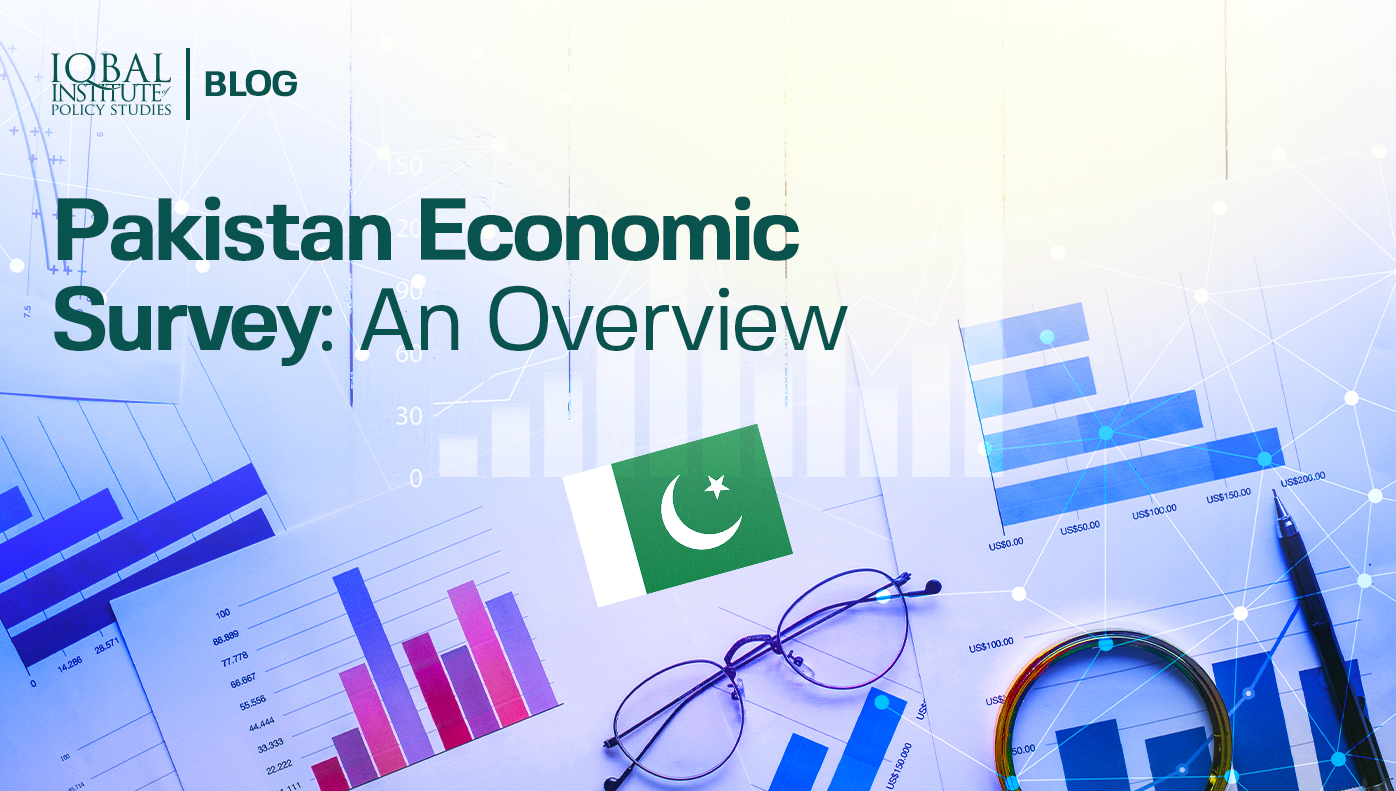
Introduction
Pakistan’s economy has seen many cycles of boom and busts over the years. Achieving long term and sustainable growth has been a challenge for Pakistan. In the face of loss-making government enterprises, insufficient export capacity, under reformed energy sector, low savings, and weak investments, the incumbent government has targeted efficiency, reduced the cost of doing business, improved regulatory frameworks for industries and sectors, enhanced production, and increased foreign investment. In the backdrop of these measures, Pakistan has achieved an impressive growth rate of 3.94 per cent, as compared to the targeted 2.1 per cent. The fiscal year 2021 started in the midst of a pandemic-induced lockdown. Like other countries in the region, Pakistan struggled to manage its economic consequences. However, through the introduction of an economic stimulus package, expansion of the social safety net, and targeted financial initiative, Pakistan emerged successful in keeping its economy afloat. Continue reading to gain a better understanding of Pakistan’s economic outlook.
Drivers of Growth
Compared to other world economies, Pakistan started to witness growth in the first half of FY2021. Domestic activity continued due to the implementation of smart lockdowns that restricted activity in only those areas where a high positivity rate of infection was found. Markets and essential manufacturing activities were accommodated with fiscal policies that encouraged faster recovery and growth across all sectors. The agriculture sector grew by 2.7 per cent, the industry sector by 3.5 per cent, and the services sector by 4.4 per cent. Steps taken for the uplift of the agriculture sector include the national agriculture emergency programme, the introduction of the rabi package to reduce input costs of farmers, and the setting of minimum support price for wheat from Rs. 1400 per kg to Rs. 1800 per kg to increase production of wheat in the country.
On the industrial front, support packages, relief to export-oriented businesses, duty exemptions, energy subsidies, and exemptions for electric vehicle manufacturers delivered a rebound in economic activity. The government also approved the SME policy action plan 2020 to provide support to small and medium enterprises. Overall, Pakistan also experienced strong growth in remittances as steps taken under the anti-money laundering regulations have facilitated the use of formal channels of sending remittances. It can be said that the timely resumption of economic activities helped Pakistan perform better than most emerging economies. On the human development side, Pakistan successfully launched the Kamyaab Jawan Youth Entrepreneurship Scheme for empowering the youth and job creation. Lastly, the State Bank of Pakistan lowered and maintained the policy rate at 7 per cent which helped Pakistan retain financial stability.
Sector Wise Growth
Pakistan has recorded an overall provisional growth rate of 3.94 percent. The agricultural sector grew by 2.8 percent, industrial sector by 3.6 percent, and services grew by 4.4 percent. Large scale manufacturing showed the highest growth of 9 percent which ultimately contributed to the growth of the overall industry. Pakistan’s GDP also grew by 14.8 percent. As Pakistan is a consumption driven economy, better consumer confidence can affect domestic production. Pakistan also saw an increase in private consumption by up to 13 percent. The manufacturing sector also experienced a broad-based growth as sectors like textile, tobacco, mineral products, and automobiles show significant improvements. As governments around the world injected money in economies the form of stimulus packages, economies all around the world rebounded. Pakistan Stock Exchange also became one of the best Asian stock markets and fourth best performing market around the world in 2020. Pakistan’s current account also remained in surplus during July to April 2021 for the first time in 17 years. In terms of remittances, Pakistan reached a historic USD 24.2 billion, a four year high. All in all, Pakistan’s economy outperformed expectations and proved to be among the most resilient of economies in times of the coronavirus pandemic. The success can be attributed to good policies made and implemented at the government level and support of the local public. (Government of Pakistan, 2021)
Conclusion
The Covid19 pandemic proved to be a big challenge for all economies around the world. The situation was extremely challenging for the manufacturing sector as it requires workers to work on site. However, the incumbent government realised the situation and took effective measures at an earlier stage of the pandemic by opening small businesses, ensuring smart lockdowns, giving relief to export oriented industries, and giving construction and industry sector packages. If policies are made and implemented with a view of future development and not just short-term appreciation from masses, Pakistan can become a fast-emerging economy in the South Asian region and the world.
Bibliography
Government of Pakistan. (2021). Pakistan Economic Survey 2020-21.
Key Takeaways
Pakistan’s economy has seen many cycles of boom and busts over the years. Achieving long term and sustainable growth has been a challenge for Pakistan.
Through the introduction of an economic stimulus package, expansion of social safety net, and targeted financial initiative, Pakistan emerged successful in keeping its economy afloat.
The agriculture sector grew by 2.8 percent, industry sector by 3.6 percent, and services sector by 4.4 percent.[/fancy_box]

Leave a Reply